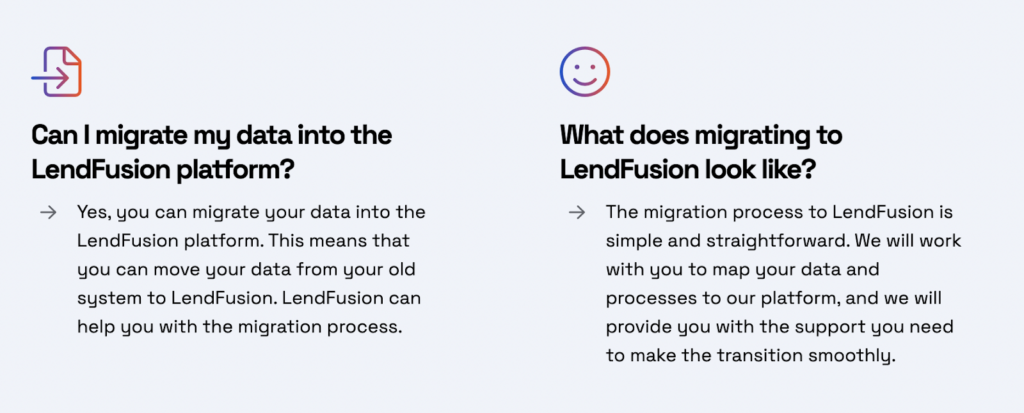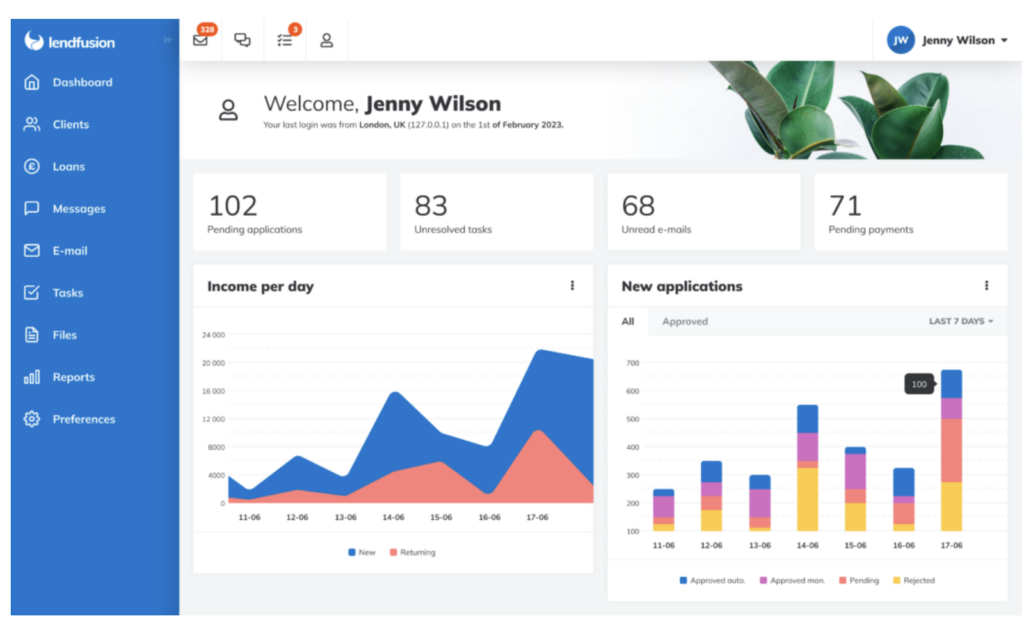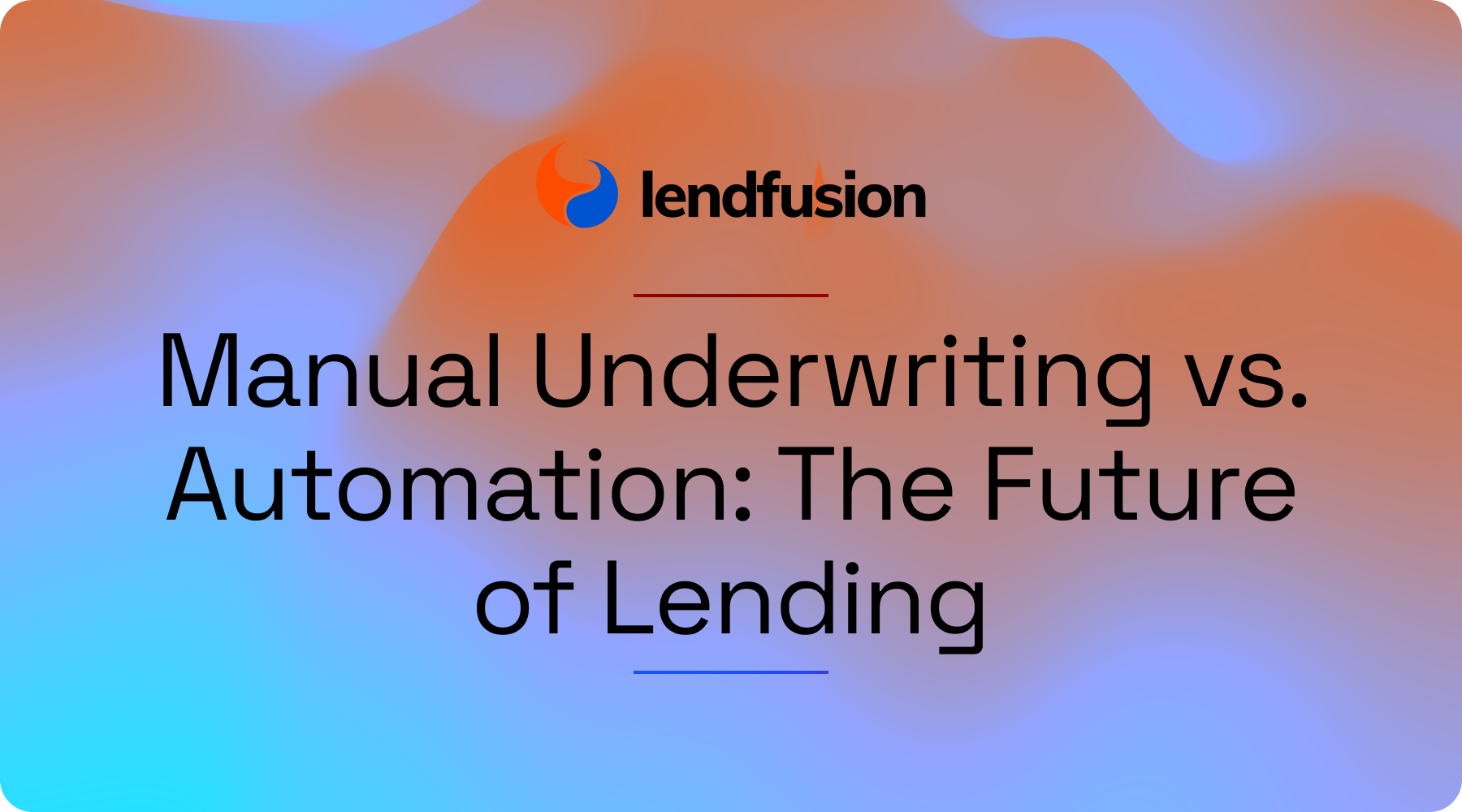Updating Legacy Software? How to Migrate to a New Loan Management System

Tired of old legacy systems preventing business growth?
It’s time to migrate to a new loan management system!
One of the biggest challenges for FinTech companies is managing the cost of legacy systems. They’re outdated, expensive and prevent business growth.
But migrating to a new loan management system is a significant undertaking that requires meticulous planning, strategic foresight, and precise execution.
If you’re about to start the process, then this guide is for you. It delves deep into the essential steps for a seamless migration, ensuring that you are prepared for every phase of this process.
We’ll cover the journey from the initial stage of evaluating your current operational needs to the full-scale launch.
You will gain insights into the best practices for system migration, including how to avoid common mistakes and how to leverage new features for improved performance.
By following our expert advice, you can look forward to a future where your lending operations are more streamlined, your team is more empowered, and your customers are more satisfied.
Ready? Let’s dive in!
Streamlining the Migration Journey: Setting the Stage for a New Loan Management System
Migrating to a new loan management system impacts all areas of the business.
This transition offers a chance to leverage modern technology, improve lending operations, and actualize a vision for operational efficiency.
A migration strategy includes:
- Assessing your current system
- Defining the requirements for your new platform
- Planning the migration with clear milestones and a comprehensive risk analysis.
Loan management software is at the core of your financial operations, scaling seamlessly with your organization’s growth.
Lenders must strategically navigate this transition with a detailed and planned migration strategy, ensuring a successful shift that improves all aspects of your lending business.
Mapping Out the Migration Blueprint
A successful migration begins with a blueprint.
This blueprint outlines the initial steps:
- A thorough assessment of the current system and a diligent search for a new alternative.
A comprehensive migration strategy is business critical and it needs to include thorough planning steps and a robust risk assessment to safeguard your lending operations against possible pitfalls.
Identifying Objectives and Desired Outcomes
Clear objectives provide a framework for the migration process and act as benchmarks for progress. These goals should aim to enhance operational efficiency, remove manual errors, and improve customer satisfaction and service.
Solving loan management challenges like delayed payments and manual tasks is crucial because an efficient loan management system can optimize these processes, leading to increased revenue and processing more applications quickly.
Crafting a Detailed Migration Strategy
A successful migration requires careful planning and will include:
- A detailed data mapping plan to ensure field alignment
- Incorporating data validation checks to uphold data quality
- A fallback plan in case of any issues
- A well-defined communication strategy to keep stakeholders in the loop and minimize disruptions to lending operations.
A clearly defined timeline is crucial for a seamless transition.
Based on our experience, we recommend you conduct a pilot migration with a small volume of loans to help you troubleshoot before a full-scale migration.
Always keep a keen eye on potential risks such as data loss and process disruptions, ensuring compliance throughout the migration.
Preparing for Change: Evaluating Your Current System
The critical first step is to evaluate your existing system.
This evaluation lays a strong foundation for aligning your current operations with the features of the new system and for developing a successful migration strategy.
For example, an analysis of your current system could uncover human errors that affect various stages of the loan process and identify delays in payment processing, common challenges with traditional loan management systems.
(Do you use Excel to manage your loans? Find out how to streamline your lending here).
Conducting a Thorough Assessment
A comprehensive assessment of your current loan management system should include the following areas:
- Infrastructure: Ensure non-disruptive operation, updates, and support.
- Security protocols: Assess compliance with regulations like GDPR and CCPA to maintain data protection and privacy standards.
- Customer data storage: Consider centralized storage for accessibility throughout the loan processing stages.
Review the system’s credit assessment capabilities, including connections with credit bureaus and the utilization of big data analytics for assessing applicant trustworthiness.
Evaluate the underwriting and risk assessment capabilities, including the presence of risk scoring models and compliance checks.
Understanding Data Structures and Workflows
As you review your current system’s architecture, understanding whether it employs a siloed or centralized data storage approach is essential for an effective data migration strategy.

Knowing how the existing system processes different loan types is important to guarantee the new system can manage them effectively.
Analyzing the credit assessment process, including its use of real-time data from credit bureaus, is necessary to maintain accurate credit decisioning in the new system.
Follow these 3 steps to ensure a successful migration to a new system:
- Understand the extent of automation in the existing system’s routine processes to maintain efficiencies after migration.
- Evaluate the effectiveness of portfolio management features, such as real-time monitoring and analytical capabilities, to ensure the new system meets your company’s needs.
- Assess the existing system’s capabilities for data migration and integration with other business tools to guarantee a smooth transition and prevent data loss.
Selecting the Right Loan Management System
Now that you understand your current loan origination system limitations, you are ready to choose the right new loan management system.
This critical decision hinges on finding software that:
- Automates the loan origination process
- Handles complex applications efficiently
- Offers automated credit assessment tools
- Provides dynamic loan application workflows to adapt to changes in business and regulatory demands.
Managing the full loan lifecycle, including servicing features like interest calculation, repayment scheduling, and proactive debt collection strategies, is central to loan management.

A new system should include scalable architecture and offer a modern,user-friendly experience. Ideally, it should be cloud-based, too, to maximize efficiency and adaptability.
Aligning Features with Business Needs
Your new loan management system should be capable of:
- Servicing a wide range of loan types to cater to a diverse user base
- Customization of workflows and automation in credit decisioning to enhance the loan origination process
- An intuitive client onboarding module that facilitates easy terms review, document upload, and KYC checks to enhance user experience.
For loan servicing software modules, look for features like:
- Automated payment processing
- Borrower self-service portals to simplify operations
- Seamless transaction processing tools and integration with repayment systems to maintain financial accuracy
- Automated debt collection features, such as due payment notifications and optimal repayment schedule calculations, for efficient loan management.
Flexibility in managing, modifying, and refinancing loans is also a must-have feature, allowing your system to adapt to both borrower requirements and evolving market trends.
Considering Scalability and Integration Capabilities
One of the reasons why lenders migrate to a new system is scalability.
Scalability ensures that the platform can accommodate a high volume of loans and clients while reducing the reliance on manual processes.
The new system must:
- Integrate seamlessly with existing core banking platforms, CRM software, and accounting systems to streamline operations.
- Offer integrations with critical third-party vendors for compliance, risk management, payments, and reporting.
- Provide access to credit bureaus and alternative data sources for improved decision-making.

The Nuts and Bolts of Data Migration
So, you’ve selected a new system. It’s time to migrate!
Migrating to a new loan management system hinges significantly on the data migration process. It is the crucial foundation for making the switch successful.
This intricate process involves the digital storage management of credit, specifying loan amounts, and facilitating rapid fund disbursement.
As the migration begins, the focus must remain on ensuring data accuracy and creating strategies for effective data transfer to avoid any data loss that could negatively impact your lending operations.
Ensuring Data Accuracy and Integrity
The success of data migration is largely dependent on data accuracy and integrity.
This begins with clean, accurately formatted data that aligns with migration requirements.
- Data profiling is a crucial step, analyzing existing data to identify and rectify inconsistencies and errors before migration.
- Data cleansing is a preventive measure, removing duplicates, incomplete, or incorrect data before the migration process starts.
Making sure you adhere to data standardization protocols is critical to ensure uniformity of format, units, and terminology across the dataset.
Implementing data validation checks throughout the migration is essential to maintaining data accuracy, completeness, and integrity.
Another important thing to note:
Automated testing tools play a key role in systematic data validation and integrity checks, helping maintain the accuracy of the migrated data.
Strategies for Effective Data Transfer
An effective data transfer strategy is built upon a detailed project plan, outlining key milestones, timelines, and resource allocation.
We’ve helped many of our customers migrate, and we recommend starting small, with a pilot migration first, to test the new system’s functionality and identify issues before a full-scale migration.

Challenges should be strategically analyzed concerning all loan management system requirements, workflow considerations, and potential risks to create a robust migration plan.
Understanding the scope of migration, including the size and complexity of the portfolio and the level of data integration, is fundamental to preparing for effective data transfer.
Based on our experience, here are 3 key steps to consider:
- User Acceptance Testing with end-users to validate the accuracy and completeness of the migrated data, securing stakeholder confidence.
- Data mapping to define and map data fields between the source and target systems to prevent misalignments and data fidelity loss.
- Reconciliation scripts to perform data checks at multiple levels before loading to a staging environment, ensuring data consistency and integrity.
Data Quality Monitoring involves:
- Using dashboards and alerts to continuously monitor the health of migrated data
- Performing data reconciliation between the source and target systems to identify and correct any data discrepancies
- Ensuring the performance of the new database’s queries post-migration to guarantee optimal and efficient data retrieval processes in the new system.
Regular communication, collaboration, and thorough testing are key elements of a successful data transfer strategy, ensuring transparency and problem resolution.
Lastly, make sure you closely monitor the migration process as this will help in addressing issues promptly, facilitating a smoother transition.
Empowering Your Team for a Successful Transition
As you start to integrate your new loan management system, it becomes essential to prepare your team for a successful transition.
Comprehensive training is required for ensuring that team members are knowledgeable with the new system’s functionality and interface.

A skilled team, armed with sufficient training and support, ensures smooth adoption of the new system.
Implementing Comprehensive Training Programs
Proper training for the new loan management system starts with:
- Understanding the current support structure
- Tailoring training formats to meet various learning preferences with interactive demos, videos, and visual aids
- Providing thorough documentation and training support for all stakeholders, especially those with less technical expertise
Developing training content with input from subject matter experts and integrating detailed user experience journeys enhances training effectiveness and prepares the team for system go-live.
You can also offer incentives as part of the adoption process.
Incentivizing employees for completing their training is a way to acknowledge their effort and thus, creates higher engagement and satisfaction with the learning process.
Engaging Stakeholders and Gathering User Feedback
Engaging stakeholders early in the migration process provides insights into critical features and expectations, thereby facilitating smoother transitions and pre-empting potential obstacles.
Maintaining transparent communication through regular updates on migration progress and managing risks with clear messaging strategies is essential for sustained stakeholder engagement.
You can also seek feedback from end-users during – and after – the migration to identify usability concerns, functionality gaps, and to further optimize the loan management process.
Recognizing stakeholder contributions with appropriate rewards and following loan management best practices via documentation and compliance can strengthen relationships, secure ongoing support, and provide significant benefits.
The Final Countdown: Going Live with Confidence
The final phase of migration – going live with your new loan management system.
First, it’s important to communicate all changes clearly, providing stakeholders with the necessary instructions to access and use the new platform.
Then, when the system is live, continuous monitoring becomes necessary so you can quickly address any unexpected issues, guaranteeing the stability and system functionality of the new system.
Remember:
This is not the end, but a new beginning.
Regular system monitoring, updates, user concern resolutions, and enhancements are part of the continuous support that will uphold the loan management system post-launch.
Conducting Rigorous Testing and Validation
Carrying out stringent testing and validation is a requirement that cannot be compromised.
These trials are pivotal to ensuring data integrity and the correct functioning of the loan management system. User acceptance testing is particularly crucial, as it uncovers any functionality issues, verifies the system’s adherence to user requirements, and confirms regulatory compliance.
A detailed testing plan that’s reviewed prior to launch will guide the execution of pre-market consumer testing effectively, and ensure that the system is market-ready.
Coordinating the Launch and Providing Support
Post-migration support extends beyond launch day; it involves routine monitoring based on user feedback, operational insights, and data quality reviews to maintain optimal performance.
Regular assessment of data quality metrics such as:
- completeness
- accuracy
- timeliness
- consistency
It’s also critical to establish an effective bug reporting system after the system goes live, allowing developers to understand and quickly fix problems, ensuring a stable loan management system.

Conclusion
Migrating to a new loan management system is a strategic move that can catapult your lending operations into a new era of efficiency, scalability, and customer satisfaction.
From the initial blueprint to the final go-live, each step has been carefully planned to ensure a seamless transition.
With a thorough understanding of your current system, the right choice of a new platform, meticulous data migration, empowered teams, and proactive support, you are now ready to migrate to a new system with confidence.
It’s up to you to take the lead and drive your business towards success.
Ready to Migrate Your Lending Operations to LendFusion?
TIred of old, outdated technology holding you back from reaching your business goals?
Book a demo of LendFusion today and see firsthand how our modern, user-friendly and affordable loan management platform can transform your business.

Vahuri Voolaid, COO
Vahuri is the Chief Operations Officer at LendFusion. Vahuri has 8 years of experience in fintech with loan management software as a product owner and an MBA with a specialisation in IT management.
Connect with Vahuri on LinkedIn.



